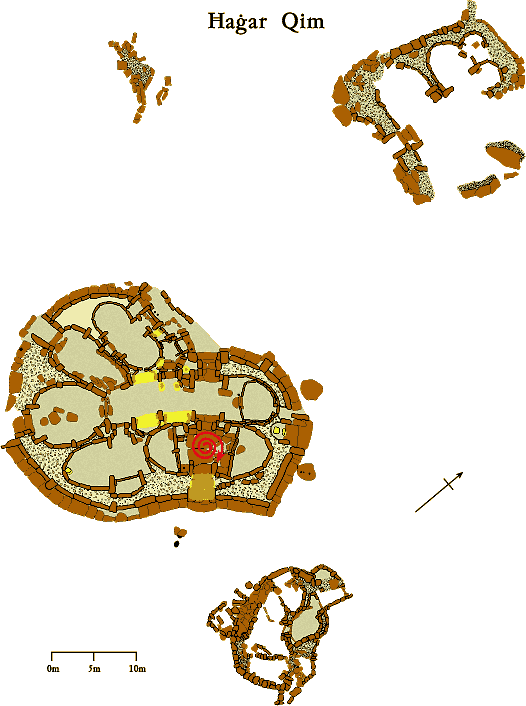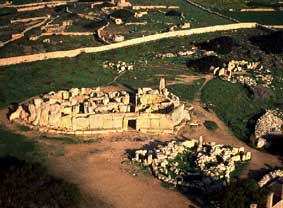|
Hagar Qim lies on top of a hill overlooking the sea. The highest megaliths are visible from Mnajdra Temple closer to the coast below. Abela already mentions the site in 1647. J.G. Vance cleared the site in 1851. In 1885 A.A. Caruana continued the excavations, and more excavations were done by Sir Themistocles Zammit and T.E. Peet in 1909. Between 1947-50 the Director of the Museum, Dr Baldacchino made a programme of conservation and restoration, where some megaliths were capped and cemented. The facade was partly reconstructed and four headless statuettes were discovered. The Hagar Qim complex consists of four separate buildings (although one has no identifialbe shape). The plan of the main building is unique to the Maltese Temples. The centre apses have been extended towards the South-West, opening into other 'rooms' and spaces. The site was used during the whole epoch of the Temple Period, with many additions and modifications between 3,600 - 2,500 BCE.
 |
|

